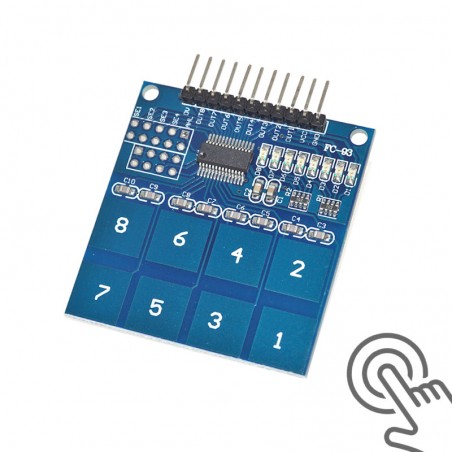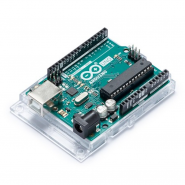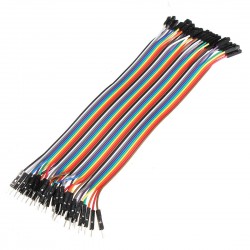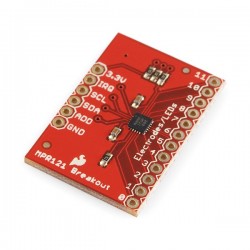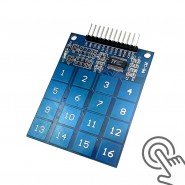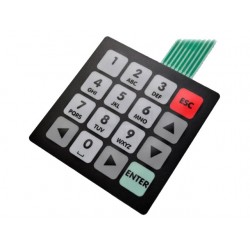This capacitive touch sensor module uses the TTP226 integrated circuit, making it easy to add capacitive touch input to your project. It features 8 sensitive touch pads that make an ideal replacement for the old fashioned keypads.
Specifications
- On-board 8-key TTP226 capacitive touch sensor IC
- On-board power indicator LED
- Working Voltage Range: 2.4 V to 5.5 V
- Configurable output mode
- PCB Size: 49.3 x 64.5 mm
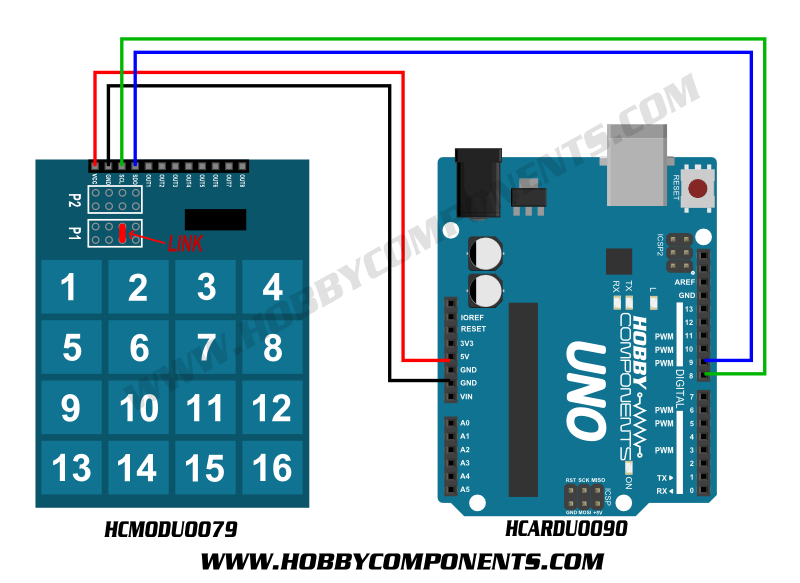
Pinout
1.....VCC (2.4 - 5.5V)
2.....GND
3.....SCL (serial clock in)
4.....SDO (serial data out)
5.....OUT 1 (key 1 state)
6.....OUT 2 (key 2 state)
7.....OUT 3 (key 3 state)
8.....OUT 4 (key 4 state)
9.....OUT 5 (key 5 state)
10...OUT 6 (key 6 state)
11...OUT 7 (key 7 state)
12...OUT 8 (key 8 state)
Documents
TTP229-Capacitive-Touch-Sensor-Module-16-channels-Datasheet
TTP229B-Schematic-Diagram
Code:
/* FILE: TTP229_16_Key_Capacitive_Touch_Example
DATE: 25/02/15
VERSION: 0.1
REVISIONS:
25/02/15 Created version 0.1
This example sketch will read the current state of the
of the keypad and if a key is pressed output its key number to the serial port.
The sketch assumes that the keypad is configured to 16 key active low mode
by shorting pads P1-3 and P1-P4 together (see schematic or sport forum for more
information). Connect the keypad to your Arduino as follows:
Keypad......Arduino
VCC.........+5V
GND.........GND
SCL.........Digital pin 8
SDO.........Digital pin 9
/* Define the digital pins used for the clock and data */
#define SCL_PIN 8
#define SDO_PIN 9
/* Used to store the key state */
byte Key;
void setup()
{
/* Initialise the serial interface */
Serial.begin(9600);
/* Configure the clock and data pins */
pinMode(SCL_PIN, OUTPUT);
pinMode(SDO_PIN, INPUT);
}
/* Main program */
void loop()
{
/* Read the current state of the keypad */
Key = Read_Keypad();
/* If a key has been pressed output it to the serial port */
if (Key)
Serial.println(Key);
/* Wait a little before reading again
so not to flood the serial port*/
delay(100);
}
/* Read the state of the keypad */
byte Read_Keypad(void)
{
byte Count;
byte Key_State = 0;
/* Pulse the clock pin 16 times (one for each key of the keypad)
and read the state of the data pin on each pulse */
for(Count = 1; Count <= 16; Count++)
{
digitalWrite(SCL_PIN, LOW);
/* If the data pin is low (active low mode) then store the
current key number */
if (!digitalRead(SDO_PIN))
Key_State = Count;
digitalWrite(SCL_PIN, HIGH);
}
return Key_State;
}
